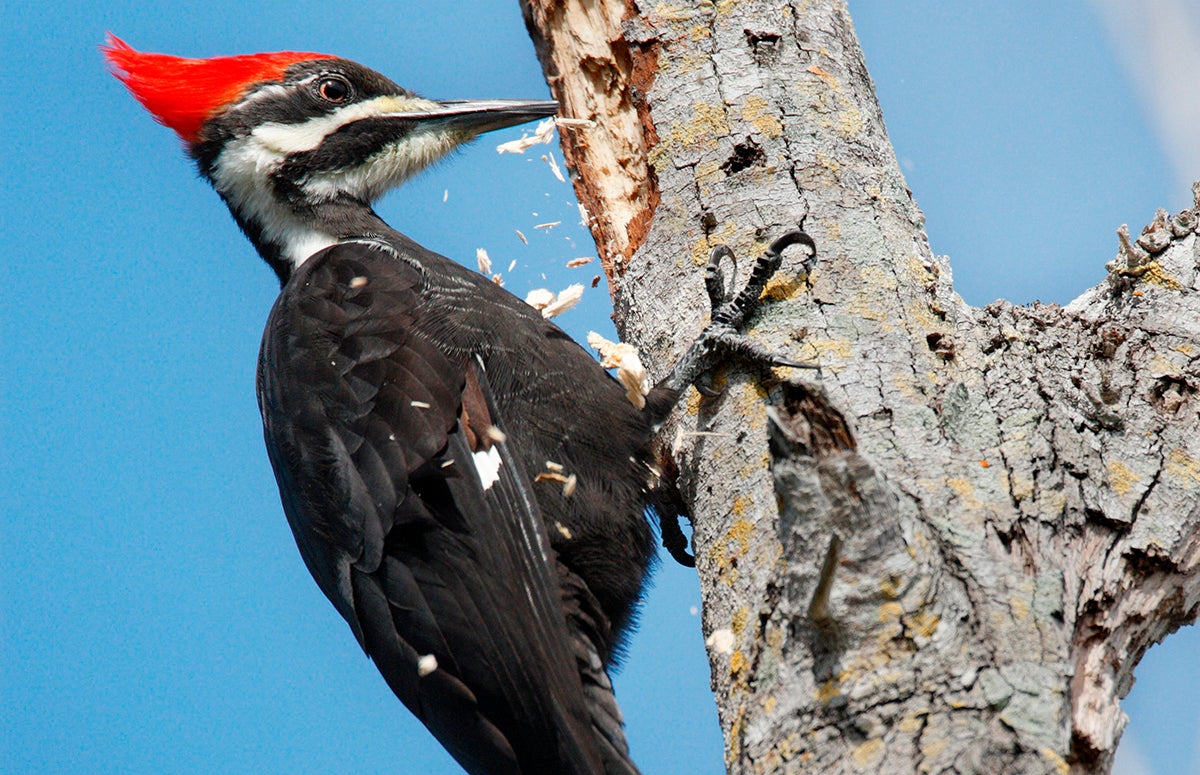Woodpeckers Unleashed: Checking Out the Marvels of These Experienced Tree Mountain Climbers
Woodpeckers, with their distinct markings and rhythmic drumming resembling with wooded areas, hold an one-of-a-kind location in the bird globe. Their specialized composition and adaptations allow them to navigate vertical surfaces with unequaled skill. Their mastery of tree climbing is simply one aspect of their interesting habits. As we look into the elaborate information of woodpeckers' nesting practices, feeding techniques, and the continuous conservation initiatives to safeguard these impressive birds, a deeper admiration for their area in nature unravels.
Makeup and Adaptations
When checking out the makeup and adjustments of woodpeckers, one can observe impressive attributes that allow these birds to prosper in their specialized environmental niche. Additionally, woodpeckers have zygodactyl feet, with 2 toes encountering forward and two encountering in reverse, providing a company hold on tree trunks while they browse for food or drum for communication.
Moreover, woodpeckers have a special tongue structure that is long, barbed, and sticky, enabling them to draw out insects from crevices in wood. This customized adjustment allows woodpeckers to exploit a food resource that is inaccessible to numerous various other bird species. In general, the anatomy and adjustments of woodpeckers display the impressive evolutionary solutions that have actually enabled these birds to thrive in their arboreal environment.
Drumming Habits
Having actually checked out the anatomy and adjustments of woodpeckers, the emphasis currently moves to understanding their drumming habits, an unique aspect of their interaction and territorial screens. Drumming is a vital type of interaction among woodpeckers, serving numerous functions such as developing territories, bring in mates, and signaling alarm. Each woodpecker varieties has a special drumming pattern that aids individuals identify participants of their very own species and differentiate them from rivals or predators.
Woodpeckers create drumming audios by swiftly pecking on powerful surfaces such as dead trees, utility posts, or even metal objects, creating a series of balanced beats. The strength and rate of drumming can differ based on the function; for circumstances, a quick drumming sequence may signify hostility in the direction of intruders, while a slower and softer drumming pattern might show courtship (Woodpeckers in Florida). In addition, woodpeckers might readjust the frequency and duration of their drumming to communicate certain messages properly
Nesting Habits
Checking out the nesting behaviors of woodpeckers reveals fascinating insights into their reproductive habits and environment choices. Woodpeckers are understood for their special nesting choices, often excavating tooth cavities in trees to develop protected rooms for elevating their young. These cavities offer not just as a nesting site but likewise as a safe sanctuary from predators and severe weather condition.
Woodpeckers exhibit a high level of integrity to their nesting websites, frequently returning to the exact same location every year. This behavior highlights the significance of suitable habitat availability for their reproductive success. The option of a nesting website is critical for woodpeckers, with variables such as tree types, elevation, and decay stage playing substantial duties in their decision-making procedure.
Surprisingly, some woodpecker species are recognized to dig deep into several cavities within their territory, supplying themselves with alternative nesting choices. This technique might offer as a type of insurance coverage against potential hazards or disruptions to their primary nesting website.

Feeding Techniques
Woodpeckers utilize a variety of specialized feeding techniques to acquire their primary food sources. Among one of the most distinct feeding behaviors of woodpeckers is drumming, which entails fast pecking on trees to discover pests under the bark. This drumming not only helps them locate prey however likewise offers as a method of interaction with various other woodpeckers. Woodpeckers have solid, chisel-like beaks that permit them to drill into timber easily. that site As soon as a hole is produced, they utilize their lengthy, barbed tongues to remove pests such as ants, beetles, larvae, and crawlers. These tongues are covered with sticky saliva that aids trap the prey. Woodpeckers are likewise understood to excavate tooth cavities in trees to gain access to surprise insect larvae or sap. Some types, like the acorn woodpecker, store nuts in specifically produced openings called granaries. This critical keeping of food assists them make it through throughout food shortage periods. Woodpeckers are truly amazing in their feeding techniques, showcasing flexibility and intelligence in acquiring their nourishment.
Conservation Efforts
In the middle of the complex feeding techniques displayed by woodpeckers, the conservation initiatives intended at securing these fascinating birds play an important have a peek here role in maintaining their habitats and populations. Woodpeckers face various hazards to their survival, including habitat loss because of deforestation, climate modification altering their ecological communities, and accidents with synthetic frameworks such as buildings and lorries - Woodpeckers in Florida. Guardians are actively functioning to address these obstacles and go to the website make sure the lasting wellness of woodpecker varieties

Education and public recognition projects are also vital parts of woodpecker conservation initiatives. By increasing recognition regarding the significance of these birds in maintaining healthy and balanced forest ecological communities, conservationists can amass support for environment conservation campaigns and promote responsible land management techniques. Through joint efforts in between researchers, policymakers, and neighborhood areas, we can interact to safeguard a future where woodpeckers flourish in their all-natural environments.
Verdict
